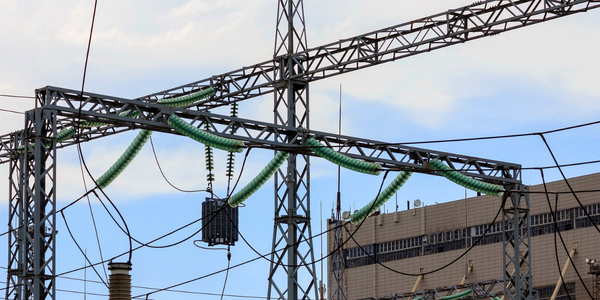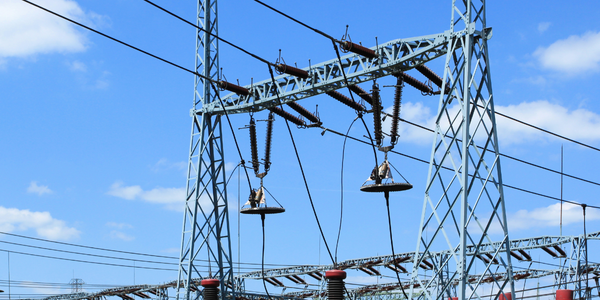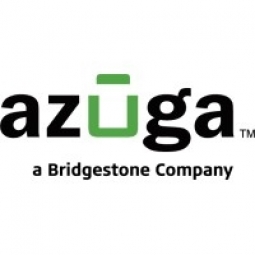Customer Company Size
Mid-size Company
Region
- America
Country
- United States
Product
- Azuga GPS units
Tech Stack
- GPS technology
Implementation Scale
- Enterprise-wide Deployment
Impact Metrics
- Cost Savings
- Productivity Improvements
- Customer Satisfaction
Technology Category
- Sensors - GPS
Applicable Industries
- Electrical Grids
Applicable Functions
- Logistics & Transportation
- Maintenance
Use Cases
- Vehicle Telematics
- Fleet Management
Services
- System Integration
About The Customer
Staybright Electric is a family-owned, self-performing electrical service and commercial lighting company that has been in operation for over 21 years. The company specializes in retail, commercial, and industrial applications. Its mission is to deliver superior quality, while also providing excellent customer service to its customers nationwide. As a full-service provider, Staybright Electric not only helps big box retail clients complete major capital projects, but also delivers top of the line preventative maintenance programs with 24/7 emergency service. The company maintains a fleet of over 240 vehicles across the country ranging from boom trucks, to cargo vans and more.
The Challenge
Staybright Electric, a family-owned electrical service and commercial lighting company, maintains a fleet of over 240 vehicles across the country. The company needed to keep track of all its vehicles seamlessly through GPS solutions to ensure productivity and customer satisfaction. However, their original GPS solution was expensive and forced them into long, extended contracts with high termination fees. The company also faced several instances where vehicles were stolen, and were hard to track down. It soon became clear that the old solution no longer met the needs of the fleet. What they needed was not only a better, cost-efficient solution for its growing fleet, but also a partner that would help it stay true to its mission of superior quality and service.
The Solution
In late 2014, Staybright Electric partnered with Azuga and installed its plug and play GPS units across its fleet. Azuga offered a much lower price than their original vendor and the customer service they received was second to none. The management of the GPS fleet system as a whole was much easier with Azuga. Azuga’s plug and play functionality and self-diagnosing technology enabled Staybright Electric to quickly exchange devices, if necessary, on their own – saving both time and money for the company. As the size of Staybright Electric’s fleet continues to grow, Azuga’s cost savings ensure the company can continue to install GPS systems in all of its vehicles without breaking the bank.
Operational Impact
Quantitative Benefit

Case Study missing?
Start adding your own!
Register with your work email and create a new case study profile for your business.
Related Case Studies.

Case Study
Hydro One Leads the Way In Smart Meter Development
In 2010, Ontario’s energy board mandated that time-of-use (TOU) pricing for consumers be available for all consumers on a regulated price plan. To meet this requirement, Hydro One needed to quickly deploy a smart meter and intelligent communications network solution to meet the provincial government’s requirement at a low cost. The network needed to cover Hydro One’s expansive service territory, which has a land mass twice the size of Texas, and its customers live in a mix of urban, rural, and remote areas, some places only accessible by air, rail, boat or snowmobile. Most importantly, the network needed to enable future enterprise-wide business efficiencies, modernization of distribution infrastructure and enhanced customer service. To meet these needs, Hydro One conceptualized an end-to-end solution leveraging open standards and Internet Protocols (IP) at all communication levels. The utility drew upon industry leaders like Trilliant to realize this vision.

Case Study
Selling more with Whirlpool
Whirlpool wanted to add connectivity to appliances and transform the company's relationship with customers. Traditionally, Whirlpool interaction with customers was limited to purchases made once every ten years. Connected washer and dryers provide exciting new features like remote management of start times and inter-machine communication.

Case Study
SAS® Analytics for IoT: Smart Grid
Companies face falling revenues, rising infrastructure costs, and increasing risk of outages caused by inconsistent energy production from renewable sources. Less money is coming in as more people and organizations take steps to curb their energy use. Utilities are paying more to maintain and build infrastructure due to increasing complexity, resulting from the rising number of intermittent and variable renewable energy sources connected in the distribution grid.

Case Study
Enel Secures Italian Power Generation Network
Electric energy operators around the world are working to increase the reliability and cyber resiliency of their systems. This includes Enel, a global power company that manages and monitors the Italian power grid. This grid:• Serves 31 million customers• Has a net installed energy capacity exceeding 31 gigawatts• Includes more than 500 power generation plants,including hydroelectric, thermoelectric, and wind• Is managed and monitored by Enel 24/7/365• Is operated by Terna, the Italian Transmission System Operator (TSO)Enel is responsible for the availability of the grid’s underlying ICS and industrial network. It also manages Regional Control Centers and Interconnection Centers which connect with the TSO. The TSO manages the flow of energy to the grid plus controls and remotely regulates the power generation of power plants, increasing and decreasing power production as required. The complex system of interaction and cooperation between Enel and the TSO has strong security implications as well as operational and business challenges.

Case Study
IoT based Energy Quality Availability Monitoring Solution
There were several challenges faced:Since this data would be in the public domain, accuracy and authenticity of this data were of paramount importance. It should be able to withstand scrutiny.It is challenging to build an appliance that can withstand a wide range of voltage fluctuations from as low at 90v to as high as 320v. Since the device would be installed in remote locations, its resilience was of paramount importance.The device would have to deal with poor network coverage and have the ability to store and re-transmit data if networks were not available, which is often the case in rural India. The device could store up to 30 days of data.The platform that deals with the data should be readily available and highly reliable and never lose a packet of data.

Case Study
Hydro Utility Builds Foundation for Powerful Efficiencies and Protection
As the main British Columbia electric distributor, BC Hydro provides 1.9 million residential, commercial, and industrial customers with energy. The hydro utility transformed to a digital business with Cisco connected networking, security, and smart grid solutions. • Deliver reliable, high-quality services • Enable remote automation and monitoring • Connect applications over a common networking infrastructure



